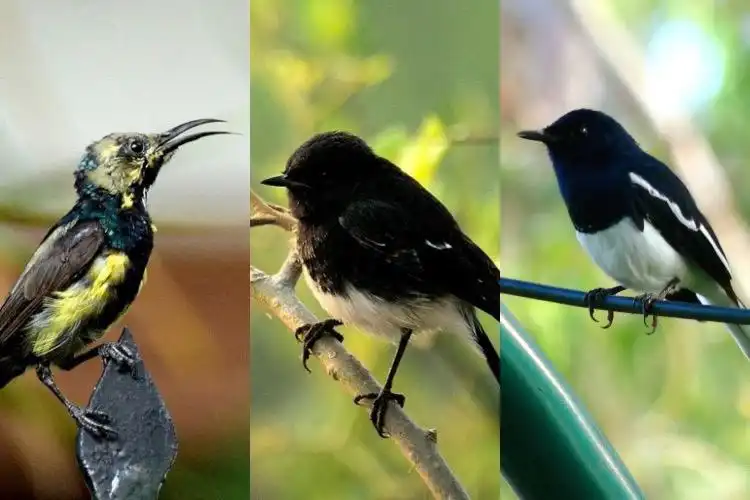Migratory Birds:
While winter is a beautiful season for bird watchers, as over 400 species migrate from Europe for nesting and breeding to various locations across north India, including the Okhla Bird Sanctuary in the capital, environmentalists are concerned that climate change is interfering with this natural occurrence. “No question the amount of birds has declined in recent years due to ever-shifting climate,” says Prerna Jain, author of the coffee table book “My Feathered Friends.” She described how reduced and delayed bird migration might disrupt the environmental cycle. “Birds are highly vital to ecosystems. They are an essential component of the food chain. They eat insects, fruits, and seeds and aid in seed dispersion. Some little birds assist.”No question the amount of birds has declined in recent years due to ever-shifting climate,” says Prerna Jain, author of the coffee table book “My Feathered Friends.”

She described how reduced and delayed bird migration might disrupt the environmental cycle. “Birds are extremely vital to ecosystems.” They are an essential component of the food chain. They eat insects, fruits, and seeds and aid in seed dispersion. “Small birds aid in pollination…”
Okhla Bird Sanctuary, on the road connecting Delhi and Noida, is a wildlife sanctuary that sees a migratory bird fly every winter.
“It is a natural habitat within the concrete structures, listening and seeing birds reduces my anxiety; it feels fresh coming here,” said Tahseen, a first-year Biotech student at Jamia Millia Islamia University.
“It is utopia for us painters, we often go there to photograph live things,” remark Adil and Rabia, Bachelor of Fine Arts students at JMI.
As one enters the Bird Sanctuary through Gate No. 1, a 4 km straight trail with the Yamuna on the left and wildlife habitat on the right welcomes the eye. The ecosystem, spread over 400 acres and filled with the sounds of birds and squirrels, is a breath of fresh air among the otherwise high-rise structures.
The sanctuary has towers and a nature walk for bird watching, and authorities at the Okhla Bird Sanctuary told Awaz the Voice that “as and when the temperature drops, the number of migratory birds will grow.”
The officials said that the final bird count is usually done in January and that “we divide the residential birds from the migratory birds in January because the birds are well settled in their nests by that time.”
Migratory species:
Migratory species present in the area include the Greylag Goose, Shoveler, Ferruginous Duck (also known as the Ferruginous Pochard), Pelicans, and the Siberian Crane. They fly across Europe to India to rest and nest. Because of the harsh winter weather, the birds forsake their native habitat. “Birds such as Painted Storks and Flamingos have made the Sanctuary their home; they have been nesting and breeding here for the past four years…”
Arrival of Migratory Birds at the Bird Sanctuary
While officials at the Bird Sanctuary are optimistic about the arrival of migratory birds, Prerna, who can be seen with her telescopic lens capturing details of birds in Nalsarovar, Sultanpur Bird Sanctuary, Bharatpur Bird Sanctuary, Okhla Bird Sanctuary, Delhi Zoo, and even small villages, has a different story to tell.
“There are certain flowers that blossom at specific times,” she explains, “and the delay in the arrival of birds means a delay in pollination via these birds, and consequently a delay in everything that follows.”
“See, birds migrate all over the world, it is usually to escape the harsh conditions of their native land, I don’t know if anyone has done a study on the impact of climate change on the migration of birds in India, but according to a study in the United States, birds are not keeping pace with the climate change,” she says.
She says this could lead to a mismatch between the time when birds arrive on their breeding territories and the dates for flower blooming, insect breeding patterns, and other resources crucial to migratory birds.
“We need to use public transportation, switch to electric automobiles, and employ non-motorized transportation wherever possible,” she adds. We must put a stop to deforestation and work to rehabilitate devastated ecosystems. I’ve seen the positive impact of one such endeavor in Argentina’s Ibera Wetlands…”
She recalls a time when a peahen opted to raise her children in her garage at her home in Greater Kailash, “oh, that was great, I couldn’t believe my eyes, I shot some thousand images of the family…
“My favourite bird cry was the fascinating call of the lovely Coppersmith Barbet. Every morning, I would set up my camera on my balcony and take numerous photographs of gorgeous birds. This is how I met my feathery pals…” she continues.
The Mustard Color Bird:
“I used to call Silver Bill “the silver sparrow” or a Rufous Treepie “the mustard color bird,” she recalls, “so my curiosity prompted me to do further research and discover the nitty-gritty of the birds…”
“Our neighbourhood had this magnificent natural habitat, but it was recently converted into an apartment building,” she explained. “Before that, my day started with the chirping of the birds, and I saw Red-Vented bulbuls, Red-whiskered Bulbuls, Jungle Babblers, Oriental Magpie Robins, and many more…”
You can connect with DNN24 on Facebook, Twitter, and Subscribe to our YouTube channel.

